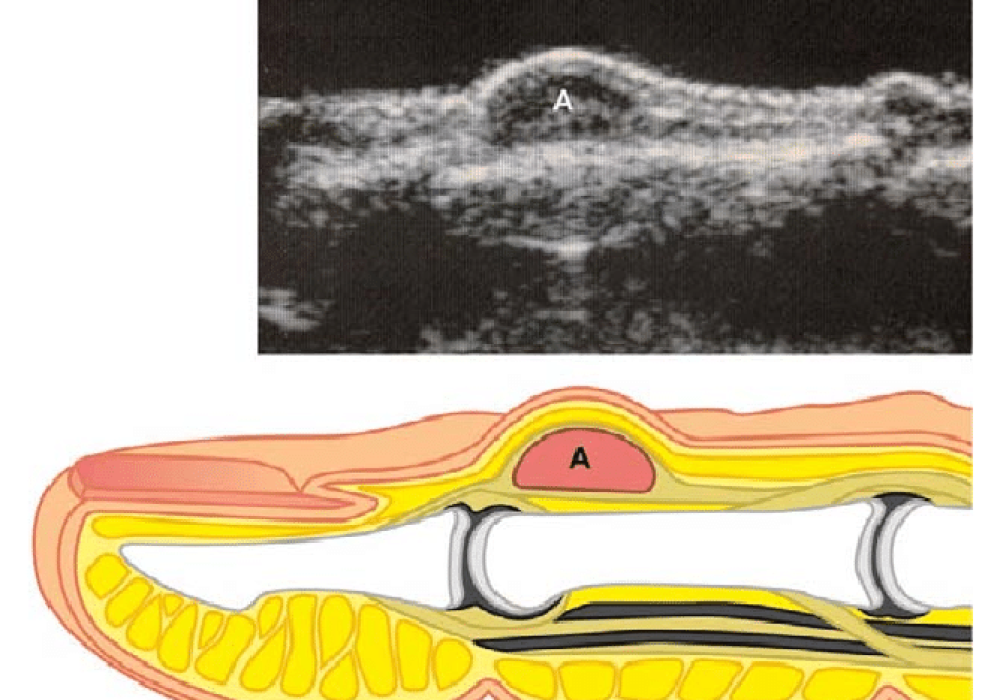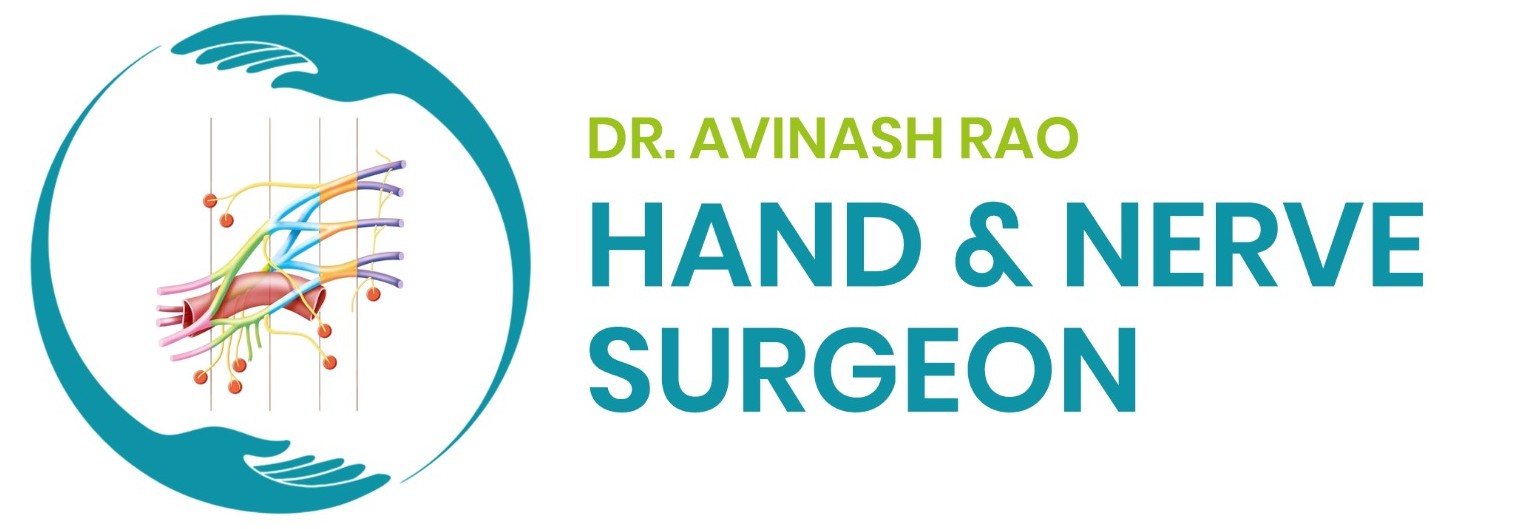
Tenosynovial Giant Cell Tumor
Tenosynovial giant cell tumors aren’t cancerous, and don’t mean you have cancer. They’re always benign. Depending on how big the tumor is and where it’s in your body, you might have an increased risk for breaking bones near it. Visit your provider right away when you notice a new growth or lump.
Overview
What are tenosynovial giant cell tumors?
Tenosynovial giant cell tumors are noncancerous growths that form in the soft tissue around your joints. They’re always benign tumors, which means they aren’t cancer and can’t cause it.
Tenosynovial giant cell tumors are a rare type of giant cell tumor. They usually don’t spread to other parts of your body, but they can develop and grow quickly.
Depending on where it’s growing, a tenosynovial giant cell tumor can make it hard or painful to move that part of your body. They can also lead to bone fractures by putting pressure on your bones.
You’ll probably need surgery to remove a tenosynovial giant cell tumor. Some people also need radiation therapy.
How does a tenosynovial giant cell tumor affect my body?
There are three types of tenosynovial giant cell tumors that grow on different types of tissue in your body, including:
- Giant cell tumors of the synovium (the tissue that lines your joints).
- Giant cell tumors of the tendon sheath (the protective sleeves that surround your tendons).
- Giant cell tumors of the bursa (the fluid-filled sacs that protect some places where muscles, tendons and bones meet).
Tenosynovial giant cell tumors can develop anywhere in your body, but the most common locations include your:
- Fingers or thumbs.
- Ankles or feet.
- Knees.
- Wrists.
- Elbows.
HAND PROBLEMS
- Fractures and Dislocations in Hand
- Metacarpal & Phalangeal fractures
- Ligamentous injuries of fingers & Thumb
- Dislocations of finger joints
- Swellings of Fingers & Hand
- Compartment Syndrome
- Mucous cyst
- Ganglion cyst / Retinacular Cyst
- GCT of Tendon sheath
- Enchondroma (Benign Bone Tumor)
- Squamous cell carcinoma
- Dupuytrens Contracture
- Post Traumatic Contracture
- Post Burn Contractures of fingers
- Volkmann Ischemic Contracture
- Stiff Fingers & CRPS
- Stiff joints of fingers and hand
- Osteoarthritis of Hand
- Finger joint arthritis
- Thumb Basal joint arthritis
- Acute Infections of Hand
- Finger Pulp Infection (Felon)
- Nail Fold Infection (Paronychia)
- Finger Infection (Flexor Tenosynovitis)
- Palm Infection (Deep Spaces of Hand infection)
- Joint Infections in Hand & Wrist (Septic Arthritis)
- Human & Animal bite injuries to hand
- Diabetic Hand Infections
- Bacterial / Fungal / Atypical Hand infections in immunocompromised patients
- Subungual Hematoma
- Nail bed injury
- Nail Deformities
- Glomus tumor
Make Your Appointment
People who’ve had a tenosynovial giant cell tumor are more likely to develop rheumatoid arthritis or osteoarthritis in their affected joint.
Who is affected by tenosynovial giant cell tumors?
Anyone can develop a tenosynovial giant cell tumor. They’re more common in certain groups of people, including:
- Females.
- Adults ages 30 to 50.
How common are tenosynovial giant cell tumors?
Tenosynovial giant cell tumors are very rare. Fewer than 50 in every 1 million people worldwide develop tenosynovial giant cell tumors each year.
Symptoms and Causes
What are the symptoms?
The most common symptoms of a tenosynovial giant cell tumor include:
- A noticeable bump or lump.
- Pain that gets worse when you move the affected part of your body.
- Swelling.
You’ll probably also have symptoms in the joint near the tenosynovial giant cell tumor, including:
- A catching, locking or popping feeling when you move your joint.
- Heat or warmth on the skin around your joint.
- Stiffness.
- Your joint feeling unstable or weak.
Which symptoms you experience and how severe they are depends on a few factors, including:
- Which type of tissue the tumor is growing in.
- Where in your body it is.
- How big it is.
Lots of people experience symptoms for years before a tenosynovial giant cell tumor is diagnosed. Make sure to talk to your provider about any changes you notice in your body.
What causes tenosynovial giant cell tumors?
Experts aren’t sure what causes tenosynovial giant cell tumors. However, some studies have found a link between people who develop tenosynovial giant cell tumors and certain changes in their chromosomes.
Chromosomes are the central part of your cells that contain your DNA. Anything that damages your chromosomes can cause changes in your body. Specifically, experts think a translocation — what happens when some of your chromosomes break apart then reconnect in new pairs — causes tenosynovial giant cell tumors.
Management and Treatment
How are tenosynovial giant cell tumors treated?
Tenosynovial giant cell tumors are usually removed with surgery. Your surgeon will remove the tumor with open surgery or by arthroscopy. They might also remove the affected tissue around it, too.
During arthroscopy, your surgeon will make a few tiny cuts on the outside of your body. Then they’ll insert an arthroscope (a long, thin tube with a video camera and light on the end) to see inside your joint. They’ll use small tools to excise — the medical term for remove — the tumor and any other damaged tissues.
Your surgeon will tell you which type of surgery you’ll need and what to expect. How long it takes to recover depends on:
- Where in your body the tumor is.
- How big it is.
- How much other tissue your surgeon needs to remove during arthroscopy.
Some tenosynovial giant cell tumors can be treated with a form of chemotherapy. Chemotherapy is usually used to treat cancer. Some types of chemotherapy can target and destroy benign growths like tenosynovial giant cell tumors.
Tenosynovial giant cell tumors have a high recurrence rate. This means that even after successful surgery to remove them or chemotherapy to destroy them, there’s a good chance another tenosynovial giant cell tumor will grow back.
It’s extremely rare, but if the tumor has severely damaged your joint, you might need an amputation.
